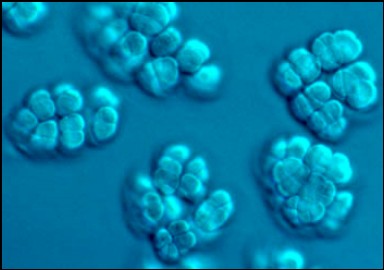Apr
8
FOUND! The Bug That Makes Methane In Garbage
April 8, 2011 | 3 Comments
We’ve long known that garbage piled up and landfills weep and leak methane gas. Its even harvested and being put to use in many places. Researchers had a hard time figuring out why – because landfills do not start out as a friendly environment for the organisms that produce methane.

The Very Large Unmangaged Mexico City Landfill. Its a huge resource waiting for use. Click image for the largest view.
Now new research from North Carolina State University points to one species of microbe that is paving the way for other methane producers. The starting bug has been found. That opens the door to engineering better landfills with better production management. Imagine a landfill with real economic prospects beyond getting the trash out of sight.
The NCSU researchers found that an anaerobic bacterium called Methanosarcina barkeri appears to be the key microbe.
Dr. Francis de los Reyes, an associate professor of civil engineering at NC State and co-author of a paper describing the research explains how the research got its start, “Landfills receive a wide variety of solid waste, and that waste generally starts out with a fairly low pH level. The low pH level makes it difficult for most methanogens – methane-producing organisms – to survive. We started this project in hopes of better understanding the mechanism that raises the pH level in landfills, fostering the growth of methanogens.”
What the NCSU researchers found was M. barkeri – a hearty methanogen that can survive at low pH levels. M. barkeri’s role is to consume the acids in its environment, producing methane and increasing the pH levels in its immediate area. This, in turn, makes that area more amenable for other methanogens.
Water; usually a problem to keep out of landfills – is key. As the moisture leaches through the landfill, it spreads those high pH levels – making other parts of the landfill habitable for M. barkeri and other methane-producing microbes. M. barkeri then moves in and repeats the process, leaving neutral pH levels – and healthy populations of other methanogens – in its wake.
M. barkeri and its methanogen cousins produce large quantities of methane, and as methane is a powerful greenhouse gas, landfill methane leaks could be bad news for the environment. Methane can be, and often is, collected at landfill sites and used for power generation. With the NCSU research the basic tool to exploit problem is available opening the door to much more and better exploitation.
Another payoff is the methanogens break down the solid organic waste as they go, compacting it so that it takes up less space. If the research gets to the obvious end, landfills themselves might be mined for the inorganics matrerials and then reused again. That would be a huge relief for everyone with a moment to think about it.
It may well happen more quickly as Dr. de los Reyes explains, “The research community can use our findings to explore ways of accelerating the methane-generation process creating methane more quickly for power generation, and making additional room in the landfill for waste disposal.”
Here’s the paper’s title and link. “Effect of Spatial Differences in Microbial Activity, pH, and Substrate Levels on Methanogenesis Initiation in Refuse,” will be published in the April issue of Applied and Environmental Microbiology. The paper was co-authored by Dr. Bryan Staley, who did the work while a Ph.D. student at NCSU; de los Reyes; and Dr. Morton Barlaz, professor and department head of civil, construction and environmental engineering at NCSU.
Waste Management, Inc. and the Environmental Research and Education Foundation funded the research. For that, and the expectation that cleaning up will look like a better more earth friendly thing to do, we are thankful. Keep those funds coming and lets hopes the technology gets to work quickly. Your humble writer finds landfills necessary but dreadful necessities that deserve a path to productivity.
Comments
3 Comments so far




I wonder if the same bug can be used to digest / transform hog waste in the lagoons of North Carolia?
In one of the Mad Max films, pig methane was the preferred post Apocalyptic power source.
It’s an amazing piece of writing in support of all the web viewers; they will get benefit from it I am sure.
Great discovery, I hope this will help in our fight against Global Warming.